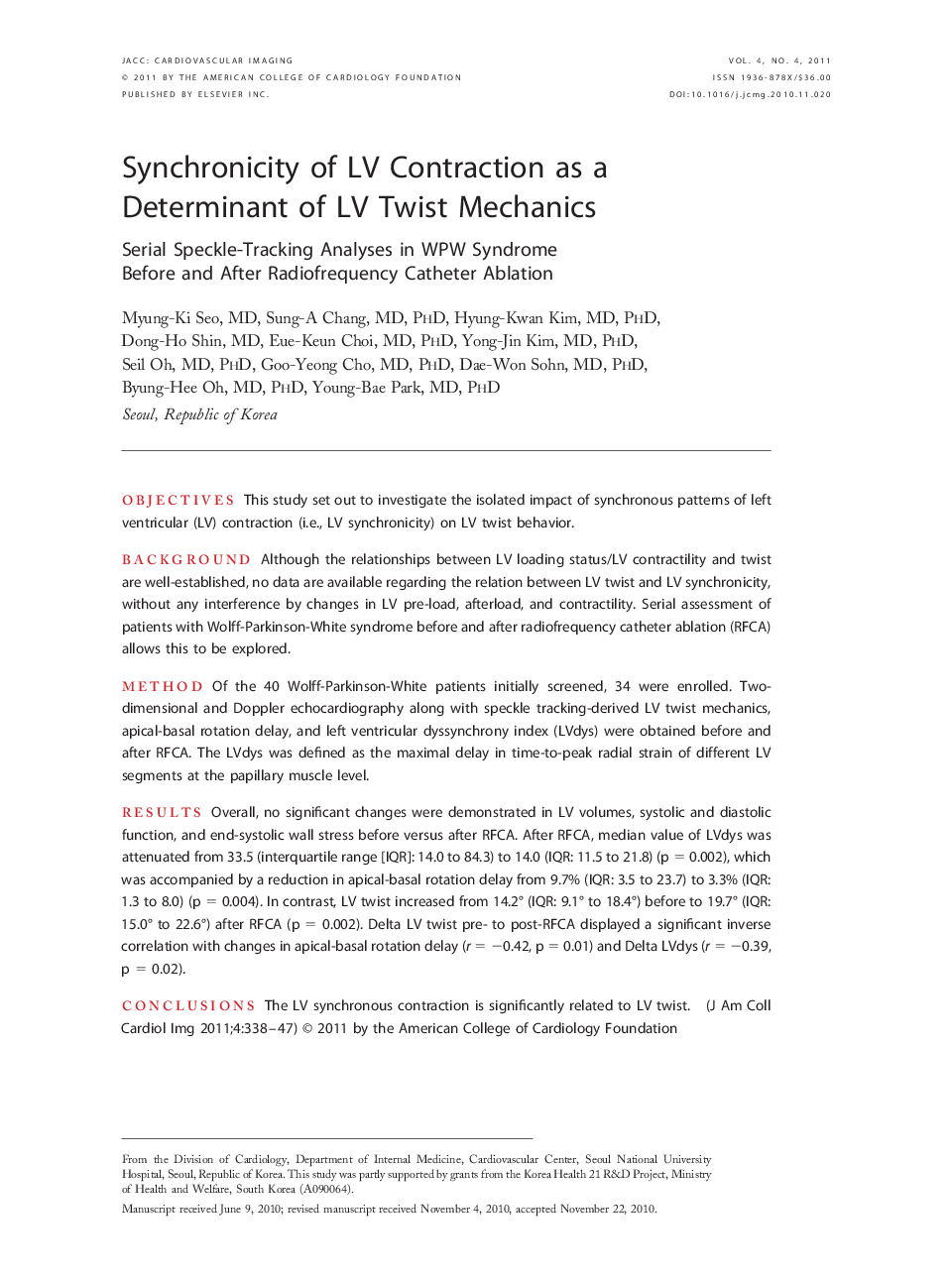| کد مقاله | کد نشریه | سال انتشار | مقاله انگلیسی | نسخه تمام متن |
|---|---|---|---|---|
| 2938735 | 1176954 | 2011 | 10 صفحه PDF | دانلود رایگان |

ObjectivesThis study set out to investigate the isolated impact of synchronous patterns of left ventricular (LV) contraction (i.e., LV synchronicity) on LV twist behavior.BackgroundAlthough the relationships between LV loading status/LV contractility and twist are well-established, no data are available regarding the relation between LV twist and LV synchronicity, without any interference by changes in LV pre-load, afterload, and contractility. Serial assessment of patients with Wolff-Parkinson-White syndrome before and after radiofrequency catheter ablation (RFCA) allows this to be explored.MethodOf the 40 Wolff-Parkinson-White patients initially screened, 34 were enrolled. Two-dimensional and Doppler echocardiography along with speckle tracking-derived LV twist mechanics, apical-basal rotation delay, and left ventricular dyssynchrony index (LVdys) were obtained before and after RFCA. The LVdys was defined as the maximal delay in time-to-peak radial strain of different LV segments at the papillary muscle level.ResultsOverall, no significant changes were demonstrated in LV volumes, systolic and diastolic function, and end-systolic wall stress before versus after RFCA. After RFCA, median value of LVdys was attenuated from 33.5 (interquartile range [IQR]: 14.0 to 84.3) to 14.0 (IQR: 11.5 to 21.8) (p = 0.002), which was accompanied by a reduction in apical-basal rotation delay from 9.7% (IQR: 3.5 to 23.7) to 3.3% (IQR: 1.3 to 8.0) (p = 0.004). In contrast, LV twist increased from 14.2° (IQR: 9.1° to 18.4°) before to 19.7° (IQR: 15.0° to 22.6°) after RFCA (p = 0.002). Delta LV twist pre- to post-RFCA displayed a significant inverse correlation with changes in apical-basal rotation delay (r = −0.42, p = 0.01) and Delta LVdys (r = −0.39, p = 0.02).ConclusionsThe LV synchronous contraction is significantly related to LV twist.
Journal: JACC: Cardiovascular Imaging - Volume 4, Issue 4, April 2011, Pages 338–347